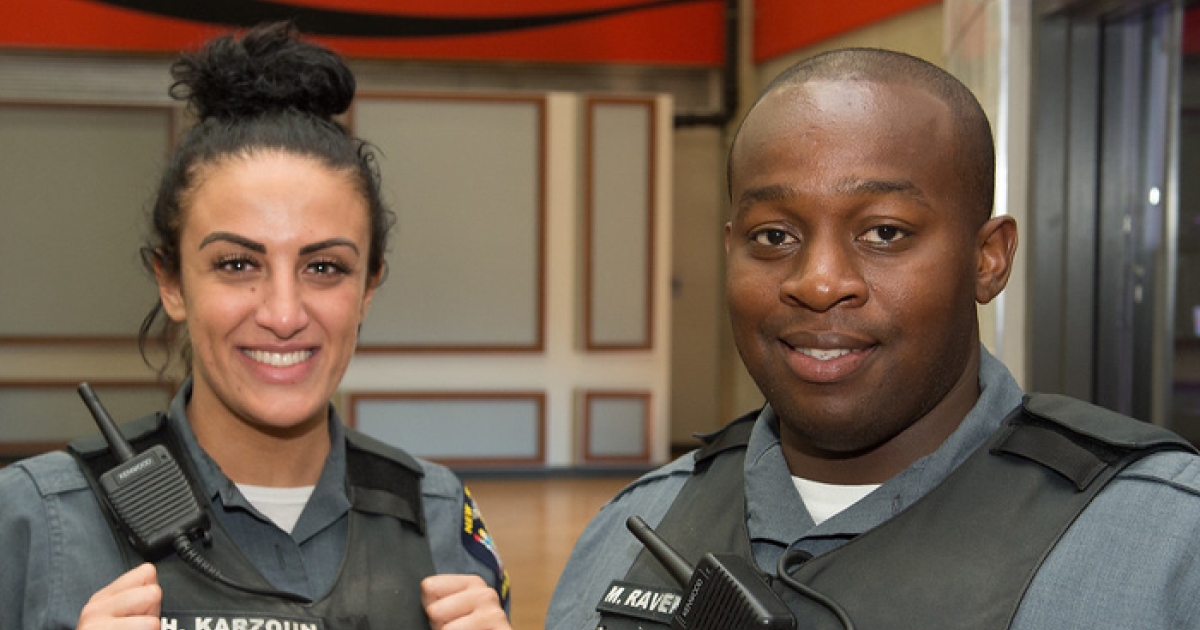
Buffalo State College’s University Police Department (UPD) recently earned reaccreditation from the New York State Division of Criminal Justice Services Law Enforcement Accreditation Council, placing it among a small percentage of departments across the country to be accredited.
UPD was first accredited in 2012 and was reaccredited in 2017. Only about 30 percent of police departments in New York State are accredited, while less than 5 percent of departments nationwide are accredited, said UPD Interim Chief Amy Pedlow. Being an accredited agency is voluntary.
Interim University Police Chief Amy Pedlow, center, with DCJS officials.
Accreditation is important, Pedlow said, because it provides a progressive and modern way to improve a department’s overall performance. It’s proof that the department’s policies, procedures, and operations meet the standards of current policing best practices and represent the highest level of professionalism in the field.
“Accreditation provides formal recognition that an organization meets or exceeds general expectations of quality in the field,” she said. “It acknowledges the implementation of policies that are conceptually sound and operationally effective. And it helps police departments operate more professionally with a focus on high-liability areas of operation. These standards provide guidance to department members, ensure accountability to the adherence of policy and training requirements, reduce litigation, and promote trust in the community.”
There are several steps in the accreditation process, Pedlow said. Each assessment period is conducted over the course of five years. To start, the Division of Criminal Justice Services (DCJS) keeps a list of 110 standards, divided into three categories—administration, training, and operations—with which departments must show proof of compliance on a quarterly basis.
Policies put in place by the department must be maintained and documented, as an audit by the DCJS could occur at any time. The policies cover everything from dealing with a driving-under-the-influence event to the use of social media.
At the end of the five-year period, a trained accreditation assessor reviews the department’s submissions for each of the 110 standards, to ensure compliance.
“They visit the station for at least a day to observe department members in operation of their daily duties and to analyze the setup and security of areas like our evidence and booking rooms,” she said. “If after this visit and standard review the assessor concludes that we are in compliance with each of the 110 standards, he or she recommends the agency for reaccreditation.”
This time around, the assessor took less than a day for his on-site visit, because he had already reviewed everything through an online system UPD maintains.
“He even commented about our review being one of the easiest he has ever completed,” Pedlow said.
“We display the accreditation seal on all of our marked police cars, on department documents, and every member of the department wears the accreditation bar on their uniform,” she said. “This is a source of pride for all university police personnel.”



